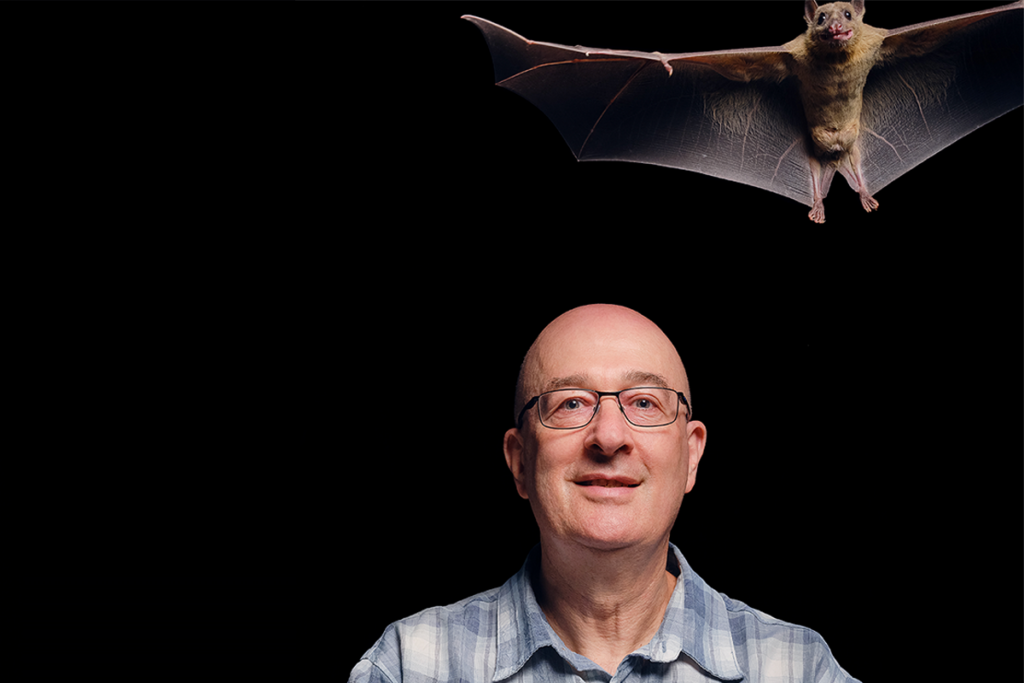SFN 2013
Recent articles
Maternal infection may alter neuronal signals, connections
Pups born to pregnant mice infected with a mock virus are known to show changes in their immune system. These effects may in turn impair proper brain signaling, according to results presented Saturday at the 2013 Society for Neuroscience annual meeting in San Diego.
Maternal infection may alter neuronal signals, connections
Pups born to pregnant mice infected with a mock virus are known to show changes in their immune system. These effects may in turn impair proper brain signaling, according to results presented Saturday at the 2013 Society for Neuroscience annual meeting in San Diego.
SfN 2013 comes to a close
A packed week of research at the 2013 Society for Neuroscience annual meeting in San Diego brought a flurry of breaking news and a creative combination of emerging research tools.

SfN 2013 comes to a close
A packed week of research at the 2013 Society for Neuroscience annual meeting in San Diego brought a flurry of breaking news and a creative combination of emerging research tools.
New imaging method details brain abnormalities in mice
A new imaging technique that can assemble finely detailed pictures of an individual mouse’s brain in less than a day is being used to explore mouse models of autism. Data from the first two models were presented Wednesday at the 2013 Society for Neuroscience annual meeting in San Diego.

New imaging method details brain abnormalities in mice
A new imaging technique that can assemble finely detailed pictures of an individual mouse’s brain in less than a day is being used to explore mouse models of autism. Data from the first two models were presented Wednesday at the 2013 Society for Neuroscience annual meeting in San Diego.
RNA bits vary in social, auditory brain areas in autism
People with autism show differences from controls in the levels of microRNAs, small noncoding bits of RNA, in the social and sound-processing parts of the brain. Unpublished results from the postmortem study were presented Wednesday at the 2013 Society for Neuroscience annual meeting in San Diego.

RNA bits vary in social, auditory brain areas in autism
People with autism show differences from controls in the levels of microRNAs, small noncoding bits of RNA, in the social and sound-processing parts of the brain. Unpublished results from the postmortem study were presented Wednesday at the 2013 Society for Neuroscience annual meeting in San Diego.
Rabies-like virus, robot make contact with single neurons
A new technique allows researchers to track the movement of a molecule along a single neuron’s projections. The technique, adapted for zebrafish, was presented Monday at the 2013 Society for Neuroscience annual meeting in San Diego.

Rabies-like virus, robot make contact with single neurons
A new technique allows researchers to track the movement of a molecule along a single neuron’s projections. The technique, adapted for zebrafish, was presented Monday at the 2013 Society for Neuroscience annual meeting in San Diego.
Men and women process faces in different parts of the brain
Conventional wisdom about how men and women process images of faces may be wrong, with significant implications for autism research, suggests an analysis of unpublished brain imaging data presented at the 2013 Society for Neuroscience annual meeting in San Diego.

Men and women process faces in different parts of the brain
Conventional wisdom about how men and women process images of faces may be wrong, with significant implications for autism research, suggests an analysis of unpublished brain imaging data presented at the 2013 Society for Neuroscience annual meeting in San Diego.
Compendium of mouse brains highlights autism’s diversity
By mapping the brains of not 1 but 27 mouse models of autism, researchers are making sense of the widely divergent structural changes seen in autism brains, they reported Wednesday at the 2013 Society for Neuroscience annual meeting in San Diego.

Compendium of mouse brains highlights autism’s diversity
By mapping the brains of not 1 but 27 mouse models of autism, researchers are making sense of the widely divergent structural changes seen in autism brains, they reported Wednesday at the 2013 Society for Neuroscience annual meeting in San Diego.
Technique visualizes networks processing theory of mind
Pairing brain imaging with simple videos that mimic social interactions can help pinpoint the brain regions responsible for inferring others’ thoughts. Researchers described this approach Sunday at the 2013 Society for Neuroscience annual meeting in San Diego.

Technique visualizes networks processing theory of mind
Pairing brain imaging with simple videos that mimic social interactions can help pinpoint the brain regions responsible for inferring others’ thoughts. Researchers described this approach Sunday at the 2013 Society for Neuroscience annual meeting in San Diego.
Reactions from SfN 2013
Tune in for daily updates and reactions from attendees at the 2013 Society for Neuroscience meeting in San Diego, California.

Reactions from SfN 2013
Tune in for daily updates and reactions from attendees at the 2013 Society for Neuroscience meeting in San Diego, California.
Atlas maps flow of neurons in the mouse brain
The Allen Institute for Brain Science is mapping the complex projections of neurons throughout the mouse brain. They presented results from the first 1,400 brains on Tuesday at the 2013 Society for Neuroscience annual meeting in San Diego.

Atlas maps flow of neurons in the mouse brain
The Allen Institute for Brain Science is mapping the complex projections of neurons throughout the mouse brain. They presented results from the first 1,400 brains on Tuesday at the 2013 Society for Neuroscience annual meeting in San Diego.
Explore more from The Transmitter
Snoozing dragons stir up ancient evidence of sleep’s dual nature
Deep-sleep cycling between brain waves of higher and lower amplitude dates far back on the evolutionary tree, according to a new comparative study of mammals and reptiles.
Snoozing dragons stir up ancient evidence of sleep’s dual nature
Deep-sleep cycling between brain waves of higher and lower amplitude dates far back on the evolutionary tree, according to a new comparative study of mammals and reptiles.
The Transmitter’s most-read neuroscience book excerpts of 2025
Books by Nachum Ulanovsky, Nicole Rust, and Andrew Iwaniuk and Georg Striedter made the list of some of the year's most engaging neuroscience titles.

The Transmitter’s most-read neuroscience book excerpts of 2025
Books by Nachum Ulanovsky, Nicole Rust, and Andrew Iwaniuk and Georg Striedter made the list of some of the year's most engaging neuroscience titles.
Neuroscience’s leaders, legacies and rising stars of 2025
Here are seven stories from the past year about some of the field’s most engaging figures.

Neuroscience’s leaders, legacies and rising stars of 2025
Here are seven stories from the past year about some of the field’s most engaging figures.